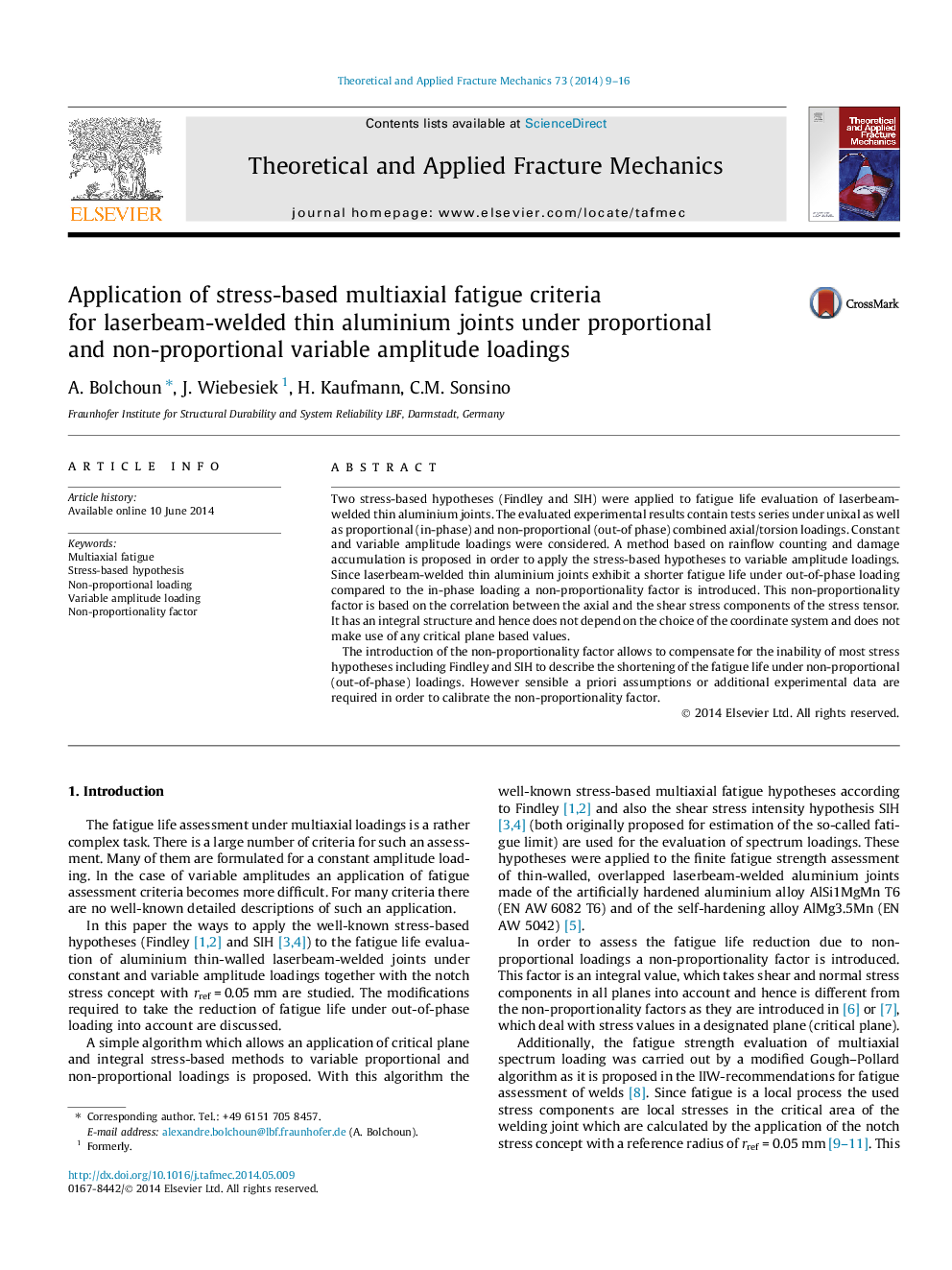| Article ID | Journal | Published Year | Pages | File Type |
|---|---|---|---|---|
| 807095 | Theoretical and Applied Fracture Mechanics | 2014 | 8 Pages |
Two stress-based hypotheses (Findley and SIH) were applied to fatigue life evaluation of laserbeam-welded thin aluminium joints. The evaluated experimental results contain tests series under unixal as well as proportional (in-phase) and non-proportional (out-of phase) combined axial/torsion loadings. Constant and variable amplitude loadings were considered. A method based on rainflow counting and damage accumulation is proposed in order to apply the stress-based hypotheses to variable amplitude loadings. Since laserbeam-welded thin aluminium joints exhibit a shorter fatigue life under out-of-phase loading compared to the in-phase loading a non-proportionality factor is introduced. This non-proportionality factor is based on the correlation between the axial and the shear stress components of the stress tensor. It has an integral structure and hence does not depend on the choice of the coordinate system and does not make use of any critical plane based values.The introduction of the non-proportionality factor allows to compensate for the inability of most stress hypotheses including Findley and SIH to describe the shortening of the fatigue life under non-proportional (out-of-phase) loadings. However sensible a priori assumptions or additional experimental data are required in order to calibrate the non-proportionality factor.
